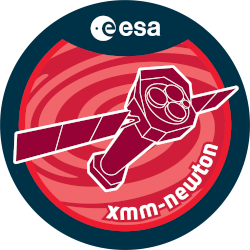

| Proposal ID | 065137 |
| Title | XMM OBSERVATIONS OF HIGHLY ABSORBED SPITZER SOURCES |
| Download Data Associated to the proposal | https://nxsa.esac.esa.int/nxsa-sl/servlet/data-action-aio?obsno=0651370101 |
| DOI | https://doi.org/10.5270/esa-entsb9t |
| Principal Investigator, PI | Dr Ioannis Georgantopoulos |
| Abstract | We propose to obtain XMM observations of 22 sources from the 24micron FLSSpitzer survey. The proposed targets have very high optical depths of silicateabsorption at 9.7 micron, suggesting that such sources are hosting a black holethat is enshrouded in a compact dust distribution. The XMM observations willdetermine the amount of X-ray absorption directly, through X-ray spectroscopy,or via the X-ray to mid-IR luminosity ratio. In analogy with nearby galaxieswhich show high 9.7 micron optical depths it is highly probable these sourceswill comprise of a high fraction of heavily obscured nuclei. Then ourobservations may provide the pathfinder for the detection of the elusivepopulation of Compton thick sources at high redshift where most of the energy of the XRB is produced. |
| Publications |
|
| Instrument | EMOS1, EMOS2, EPN, OM, RGS1, RGS2 |
| Temporal Coverage | 2010-10-28T20:31:25Z/2011-04-26T11:55:56Z |
| Version | 17.56_20190403_1200 |
| Mission Description | The European Space Agencys (ESA) X-ray Multi-Mirror Mission (XMM-Newton) was launched by an Ariane 504 on December 10th 1999. XMM-Newton is ESAs second cornerstone of the Horizon 2000 Science Programme. It carries 3 high throughput X-ray telescopes with an unprecedented effective area, and an optical monitor, the first flown on a X-ray observatory. The large collecting area and ability to make long uninterrupted exposures provide highly sensitive observations. Since Earths atmosphere blocks out all X-rays, only a telescope in space can detect and study celestial X-ray sources. The XMM-Newton mission is helping scientists to solve a number of cosmic mysteries, ranging from the enigmatic black holes to the origins of the Universe itself. Observing time on XMM-Newton is being made available to the scientific community, applying for observational periods on a competitive basis. |
| Creator Contact | https://www.cosmos.esa.int/web/xmm-newton/xmm-newton-helpdesk |
| Date Published | 2012-05-14T00:00:00Z |
| Last Update | 2025-08-04 |
| Keywords | "XMM", "xray absorption", "nearby galaxy", "compton thick sources", "absorbed spitzer sources", "compact dust distribution", "xray spectroscopy", "heavily obscured nuclei", "elusive population", "micron optical depths", "optical depths", "silicate absorption" |
| Publisher And Registrant | European Space Agency |
| Credit Guidelines | European Space Agency, Dr Ioannis Georgantopoulos, 2012, 'XMM OBSERVATIONS OF HIGHLY ABSORBED SPITZER SOURCES', 17.56_20190403_1200, European Space Agency, https://doi.org/10.5270/esa-entsb9t |